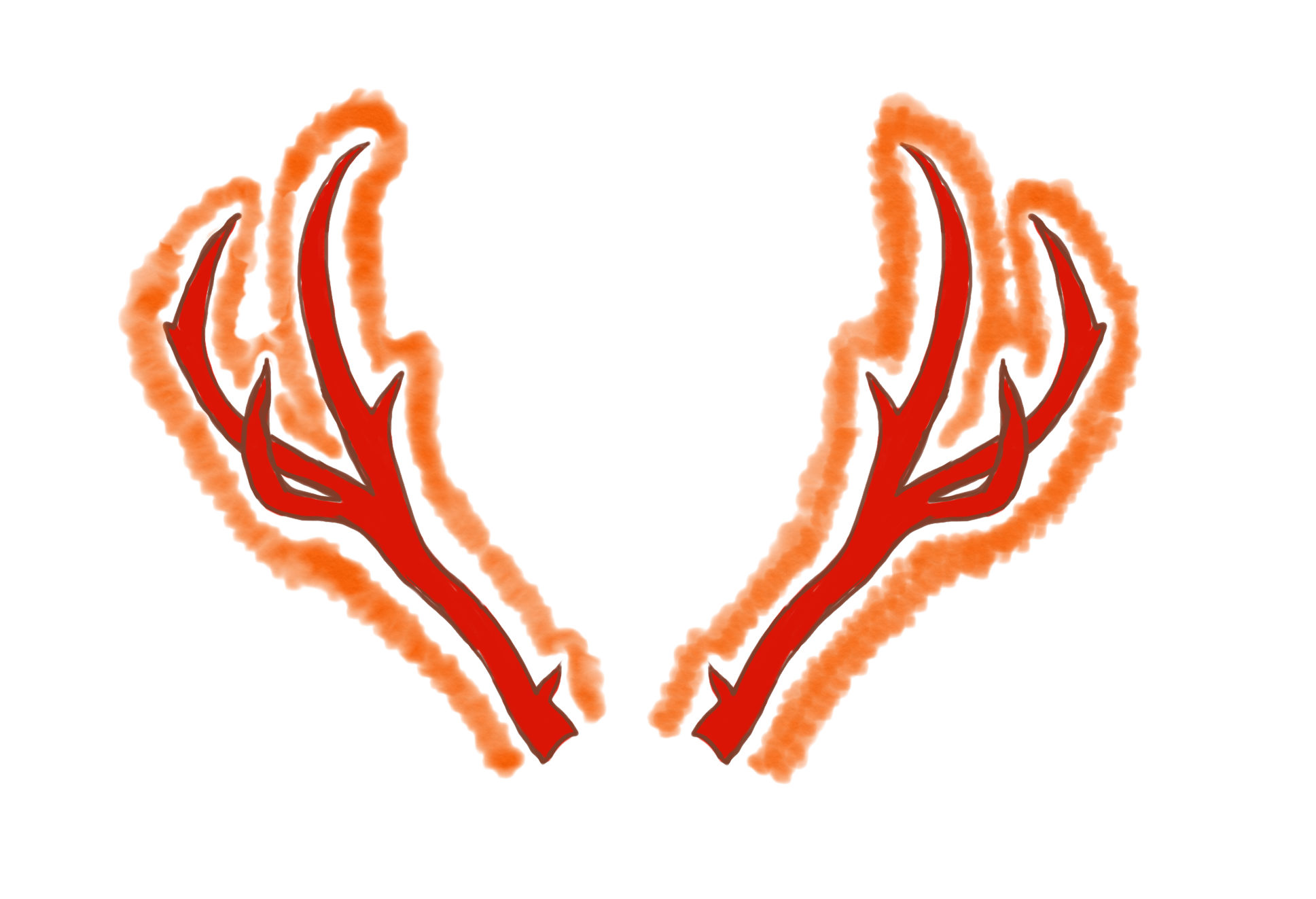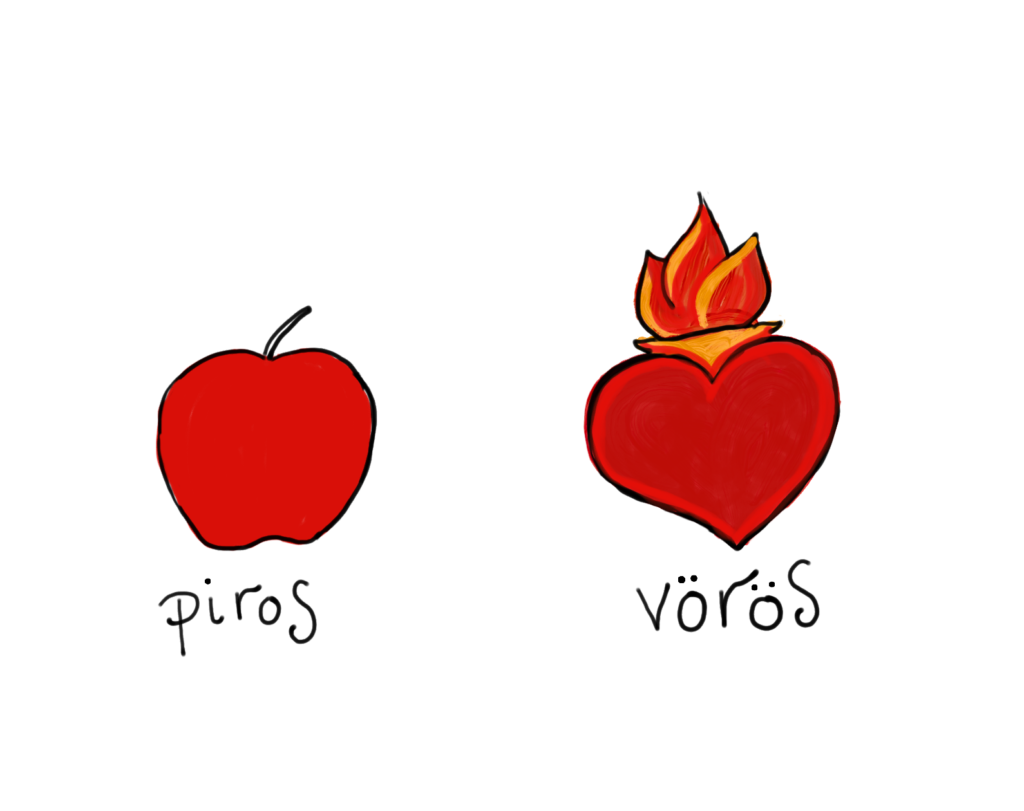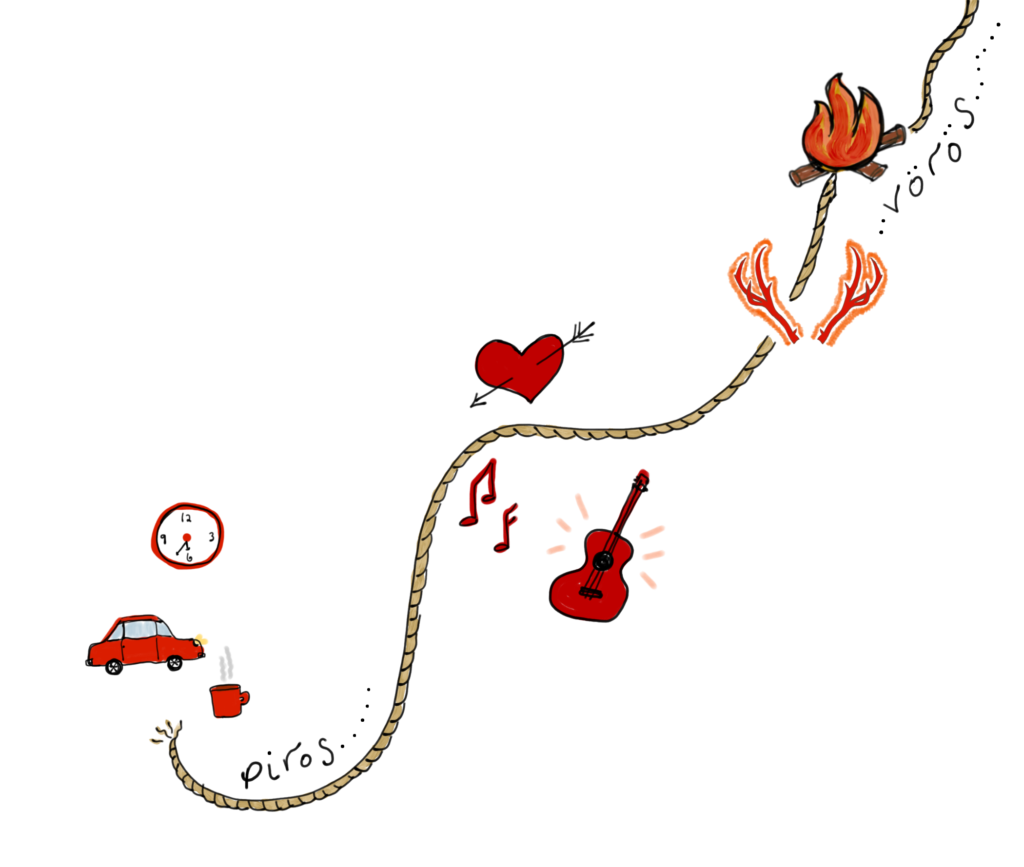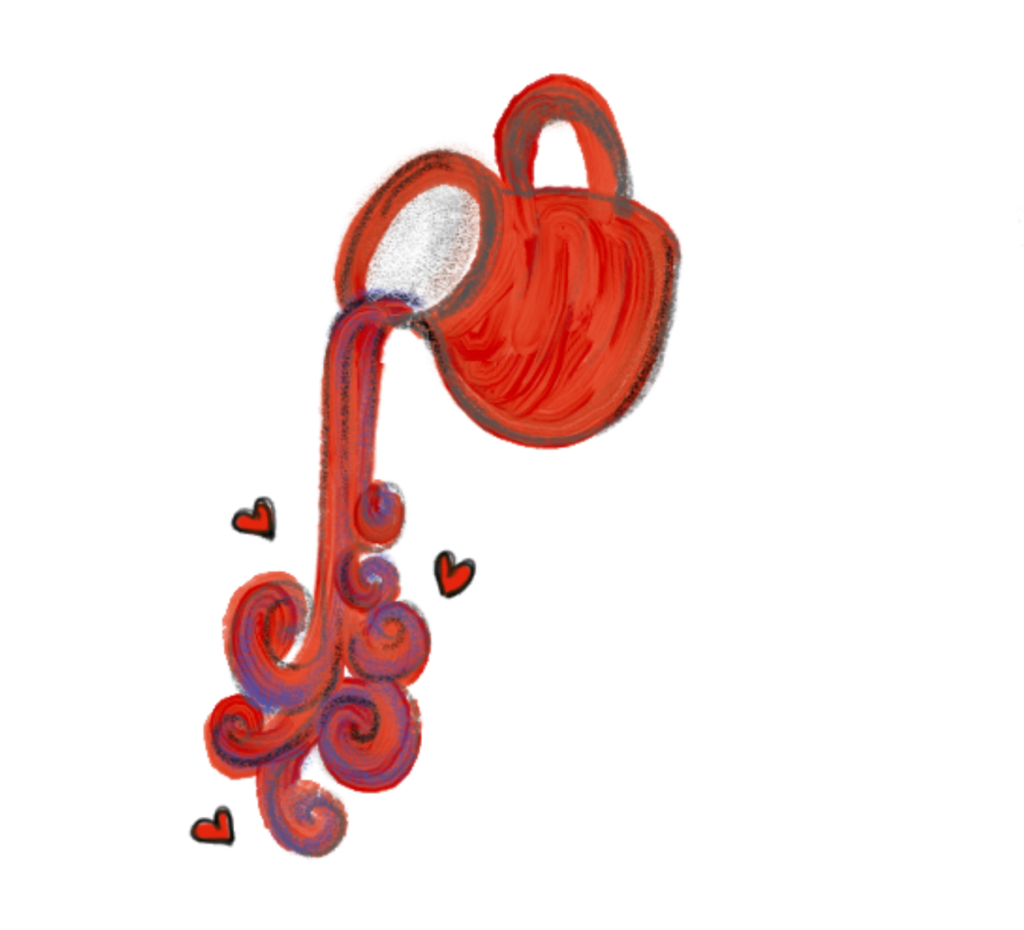Two Colors of Red
A New Visionary Teaching About Sacred Emotion
Exactly one year ago while in Budapest, Brad dreamed of a woman shaman with glowing red antlers. That visionary dream inspired us to write an academic paper about how “ecstasy” is typically misunderstood or left out of both the study and contemporary practice of shamanism. You can find a shorter summary of our paper here. In a nutshell, scholars and new age teachers have lost touch with the importance of ecstatic emotion, instead reducing the shaman’s ecstasy to a trance state or “state of consciousness.”
The glowing red antler vision helped us better articulate a truth about our own work: Sacred Ecstatics is primarily about experiencing sacred ecstasy, which is being consumed by heightened emotion. Even after we named our work Sacred Ecstatics it took us some time to fully appreciate that sacred emotion is the difference that makes all the experiential difference in one’s spiritual life.

On the anniversary of the glowing red antler vision, Brad had another dream while in Budapest. Before going to sleep we discussed how over the past several years Sacred Ecstatics has had two homes—one in the United States based in New Orleans and another in Europe based in Budapest. As a result we are perpetually unsure whether we are becoming less American or more Hungarian. We also ponder whether we are heading east or west as we continue to be led in vision to both the left and the right sides of mystery. On this night, Brad was dreaming but thought he was wide awake. Stranger still, he felt he should move either his right or left leg but was unsure which one:
I then felt my left leg cramp and this definitely woke me up, leaving me aware that I had been asleep before. I wondered why my dream had me asking whether to move my left or right leg, but then I soon fell asleep again. Another dream began wherein I also thought I was awake. Hillary and I were discussing Hungarian folk traditions and the importance of the color red. We tried to apply what we had previously learned about the color red in Hungarian culture to the former dream about moving my left or right leg. Then I woke up to find I had been dreaming. I was so confused that for a moment I couldn’t tell the difference between right or left or whether red was one or two colors. I also couldn’t remember whether we had ever previously had a discussion about the color red in Hungary, or whether I dreamed that as well.
Hungarian “Red”: One or Two?
The next day we did some research and found that the primary color in the oldest embroideries and hand-woven fabrics of Hungary is red, which was meant to express “joy, passion and high spirits.” It was also considered “to have a protective power: it was associated with life and blood, fire which gives or takes life, and light.”[1] But most relevant to Brad’s dream, we discovered that there are two words for red in the Hungarian language—piros and vörös. These two words have been the source of constant debate since the late 19th century. In an academic paper entitled, “The Puzzle of Two Terms for Red in the Hungarian Language,” Mari Uusküla and Urmas Sutrop summarize whether this conundrum stands resolved or unresolved:
Today, this controversy does not only seem a good subject for linguists, but is also being studied by naturalists (chemists, physicists), psychologists and others. The discussion of two reds in Hungarian was actually initiated by the physician Csapódi in 1899, who suggested that in medicine (as well as in other sciences) there should be a clear distinction between what should be denoted by the colour word piros and what with the colour word vörös. (p. 364)
They conclude:
“There is only one basic colour term – piros – denoting ‘red’ in Hungarian. The other term for red – vörös – is not basic. . . The choice between the two terms for red is conditioned on the cognitive, emotional and or collocational levels rather than the basic level . . . we realize that the example of the two basic reds for Hungarian has already acquired a life of its own and thus we are hardly able to stop [it] . . .” (pp. 372-373)

What are we to learn from this visionary teaching? It is certainly a reminder that everything comes in pairs, including antlers and visions. There is also left and right, east and west, dreaming and waking, certainty and uncertainty, and all the many oscillations back and forth across every dualism. Isn’t it also the case that you are never really sure whether you are more in First Creation (the realm of changing mystery) or Second Creation (the world of language and knowing), awake in one and asleep in the other? For Brad, he is at least certain that red is the color of his true love’s hair, because Hillary is a redhead (vöröshajú).
Moving from One Red to Another
On the first anniversary of the glowing vörös antlers vision, we were led to two Hungarian words for red. Using what we formerly learned about the role of heightened emotion in shamanism, we now propose that the difference between piros and vörös is found in the emotional intensity associated with experiencing color. In other words, when the heart rises, the broader spectrum and greater nuance between two shades of red is revealed.
With sufficient sacred emotion, you climb the rope to God which is also the spiritual thermometer, passing from piros to varying degrees of vörös. This is the journey from the cooler temperatures of the everyday to the heat of uplifting sacred emotion, trembling vibration, and then hopefully to the pinnacle experience of body-shaking sacred ecstasy.

What we modern folk have run away from and been most embarrassed by—old fashioned religious emotion—is actually the holy grail we each dream to find. The difference between piros and vörös, waking and dreaming, dim and glowing antlers, as well as shrunken living and big room mystery is not solely computed in the brain. Divinity in all its changing sides and directions is something felt in a whole body charged with the emotion and motion inspired by soulful rhythm and melody.
We are right (or is it left?) in concluding that if you ask one question, you will get two answers, one for each side of reality. However, each question actually reveals two questions, and this surely doubles the former answers. All else that is certainly and uncertainly important about “two” for the two of each part and whole of you is likely better to not be read. (Although we do recommend you read this teaching about two hands, two rhythms, and two prayers).
The main message of Sacred Ecstatics is this: Stop only looking for spiritual understanding and start cooking with sacred emotion. Stop waiting and start baiting, baking, and making yourself the hunted, hunter, catcher, vessel, and pitcher ready to pour the utmost divine feeling—that which makes the antlers glow. All else misses the point and blocks your entry into red and even redder mystery.

-The Keeneys, July 23, 2019 (illustrations by Hillary Keeney)
[1] https://www.folk-art-hungary.com/folk-articles/hungarian_folk_colors
